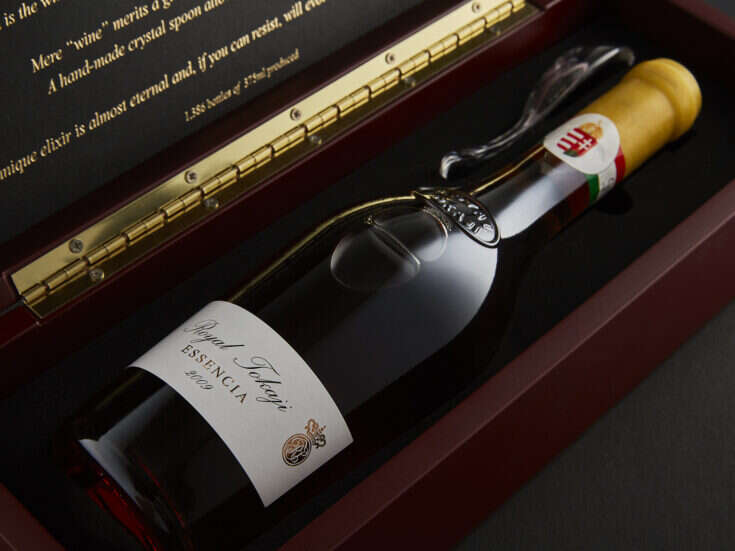By Franco Ziliani
The International Gewürztraminer Symposium in Termeno holds all the cards when it comes to being the benchmark event for “Gewürz” fans. The sixth annual event ran from July 5-7 on the South Tyrol’s border with Austria, where the predominance of the German language and culture leave little indication of its Italian nationhood. The program, boasting experts from Italy, France, Germany, and the United States, covered a comprehensive range of Gewürztraminer-related topics, from appreciating the wine’s unique characteristics and context, to viticulture, winemaking, and beyond.
Gewürztraminer is a not a single variety, but rather a cultivar with three identities: Roter Traminer, with its nearly red grape; Gewürztraminer or Traminer aromatico, with its dark yellow, somewhat pinkish hue; and the yellow-skinned “generic” Traminer that has nothing like the aromatic interest of the other two.
The Gewürztraminer variety exists as 14 clones in Germany, three in France, and six in Italy, and is planted on some 6,400ha, 4,600 of which are in Europe: 2,600ha are in France (Alsace); 825ha are in Germany; 700ha in Austria; and 500ha in Italy (400 of which are in the South Tyrol alone). The New World, with its appetite for varieties of European origin, boasts some 1,800ha, 900 of which are in the United States (in California, Oregon, and Washington State), 300 in Australia, 300 in South Africa, 280 in New Zealand, and a very small number in Chile and Argentina.
Marked differences in growing areas and terroirs, each more- or less-suited to the variety’s cultivation, inevitably yield myriad styles, particularly in Europe. The trocken, or dry style, with up to 9 grams of residual sugar per liter, is widespread in the Alto Adige, Alsace, and Germany, whereas the off-dry or lightly sweet style, with up to 40 grams of sugar, is found in Alsace and the New World. Sweeter still are the German Spätlese and Auslese versions, and what we might call the “noble” styles, which include the Alsace séléction de grains nobles, the Austrian and German Beerenauslese, and the passito styles produced so capably in the Alto Adige.
Gewürztraminer vaunts one of the most complex aromatic spectrums in the wine world, thanks to its elevated number of terpenes, 90 percent of which are contained in the grape’s skin. Careful attention must therefore be paid during vinification to the handling of the skins and methods of extracting the aromas.
The terpenes will change into various other compounds during bottle-ageing. It is possible for the senses to detect four categories of Gewürtztraminer. The first group is comprised of wines that develop aromas linked to compounds such as 3-mercaptohexan-1-ol: tropical fruit, peach, mango, passionflower, and grapefruit. The second derives from 4- vinilguaiacol, showing intense spice, clove, cinnamon, and almond. In the third, linalool and geraniol produce floral essences of rose and geranium, but also passion fruit and lychee. The final group is Botrytis-infected, in which dried fruit and honey are predominant. In the better wines, all four categories come into play, and in some instances particular terroirs add a kaleidoscopic sensory complexity where floral, fruit, spice, and sweet sensations intermingle, with characteristics that range from tropical fruit to crisp fruit-floral to citrus. In order to orchestrate this “symphony of aromatic nuances”, the time of harvesting must be very carefully judged: full ripeness must be reached without a high level of alcohol (which tends to be naturally elevated in Gewürztraminer) but without lowering the acidity (naturally low) and raising the pH levels. The more alcoholic, fatter, and extracted these wines are, the more they lose in freshness. But if the fruit is picked before phenolic ripeness is complete, the wine runs the risk of exhibiting that slight note of tannin, of bitter astringency, that some wines betray on the finish.
Clearly, it is no mean feat to achieve a harmonious balance between all the necessary elements required to achieve a superior Gewürztraminer: appealing aromas and good extraction, fruit and residual sugar that create a sensuously rounded palate, counter-poised against a sinewy, crisp, well-balanced body. When present, these qualities simplify Gewürztraminer’s otherwise tricky relationship with food. This is a wine that is particularly enjoyable on its own, but it does pair well with shellfish, soups, and spiced fish.
Two of the symposium’s more unconventional events centered on the Gewürztraminer & Food theme, the first being a creative melee of pairings, while the second was based around Asian spices and sweet-sour flavors.
David Schildknecht hosted tastings that demonstrated the strong points of European Gewürztraminer, highlighting the producers’ stylistic tendencies, as well as those of the New World, which often showed a pioneering verve and a desire to offer an alternative to the Chardonnay and Sauvignon Blanc juggernauts.
Certain of the more avant-garde producers are German, French, and Austrian, but they prefer a consistently European stylistic medium, whereas some of the examples from New Zealand, California, Canada, and Oregon that were available for tasting were fermented and matured in oak-a rare procedure in Europe-and proved to be wines that were not only technically perfect but enjoyable.
Some of the many selections did not seem to show great varietal typicity, as the panoply of subtle aromas that renders a well-made Gewürztraminer so intriguing and alluring was not always apparent. In some cases the culprit was the young age of the vineyards, which needed to mature in order to achieve the desirable spiciness and complexity; in others, unsuitable terroirs probably played a part in wines with abundant fruit but scant aromatic complexity, showing instead heavy, one-dimensional, and predictable wine bereft of the fascination inherent in a fine Gewürztraminer, particularly when it is not drunk too young.
Tasting such a range of Gewürztraminers was nevertheless an intellectually stimulating experience, particularly the opportunity to compare them with the various Alto Adige versions that local producers proudly presented, maintaining a long tradition close to the birthplace and heartland of this wonderful variety and wine.







